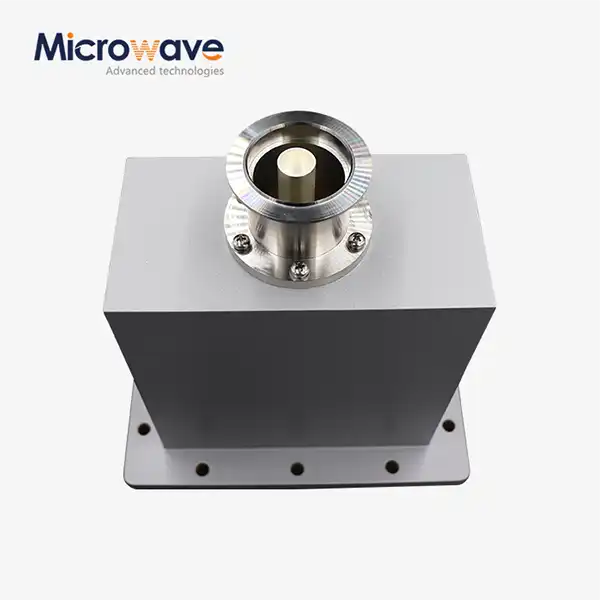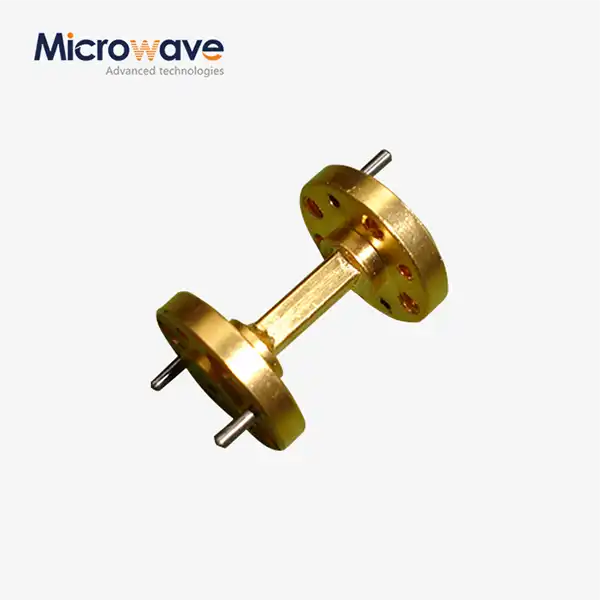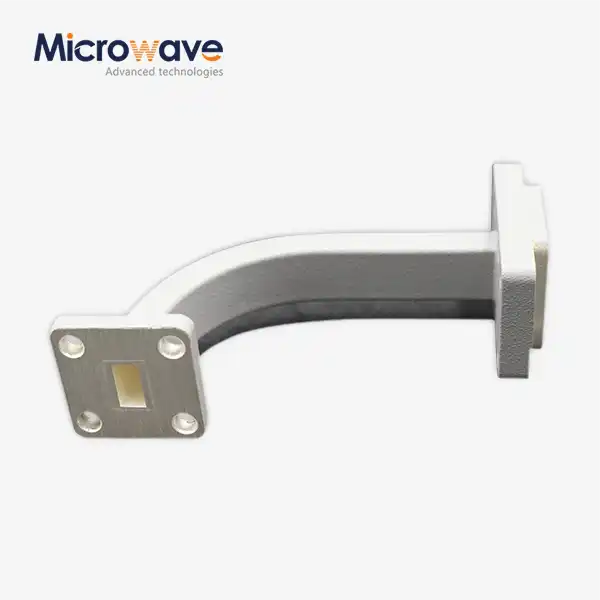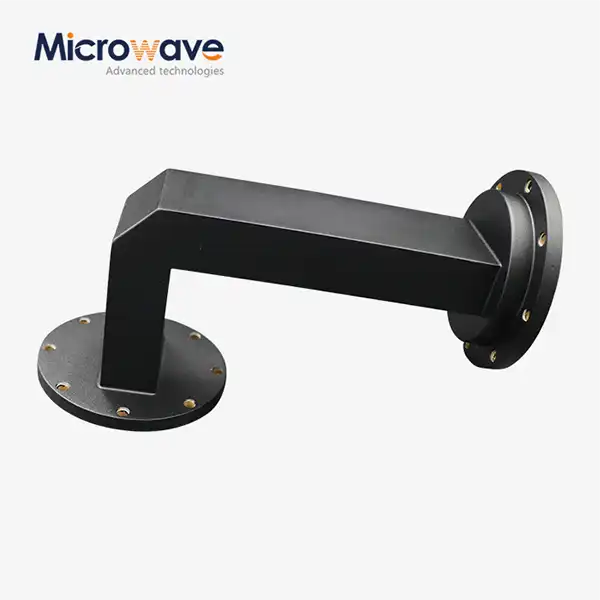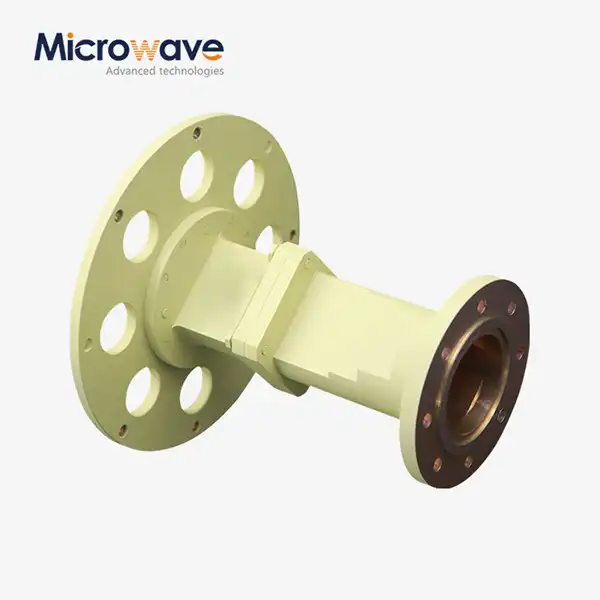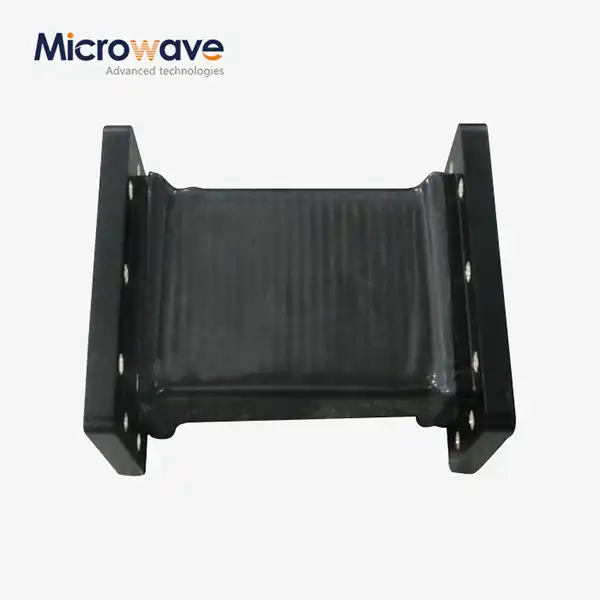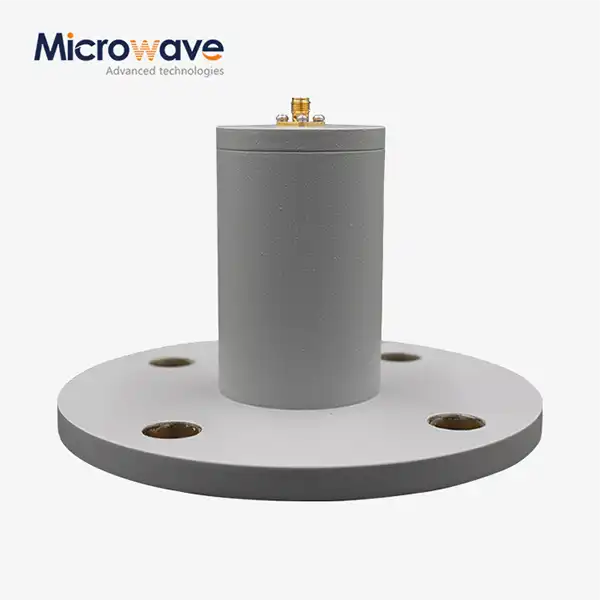How Can Low Side Lobe Diagonal Linear Polarization Horn Antenna Improve Your Satellite Ground Station Efficiency?
In today's rapidly evolving satellite communication landscape, ground station efficiency has become a critical factor determining operational success and cost-effectiveness. The Low Side Lobe Diagonal Linear Polarization Horn Antenna represents a breakthrough solution that addresses the fundamental challenges facing modern satellite ground stations. This advanced antenna technology significantly enhances signal quality, reduces interference, and optimizes overall system performance through its innovative design featuring diagonal linear polarization and exceptionally low side lobe characteristics. By minimizing unwanted radiation patterns and focusing energy precisely toward desired directions, this antenna technology enables ground stations to achieve superior signal-to-noise ratios, reduced interference from adjacent satellites, and enhanced communication reliability across various frequency bands up to 110 GHz.
Enhanced Signal Quality and Interference Reduction
Superior Side Lobe Suppression Technology
The Low Side Lobe Diagonal Linear Polarization Horn Antenna employs advanced electroformed rectangular-diagonal square waveguide conversion technology that fundamentally transforms how satellite ground stations manage signal integrity. This sophisticated design achieves exceptional side lobe suppression on both E-plane and H-plane configurations, ensuring that unwanted radiation is minimized to levels significantly below conventional horn antennas. The diagonal configuration creates a unique radiation pattern that concentrates energy more effectively toward the target satellite while simultaneously reducing spillover into adjacent frequency bands or neighboring satellite systems. This technology becomes particularly crucial in dense satellite orbital environments where multiple communication satellites operate in close proximity, requiring precise beam control to prevent signal interference. The antenna's ability to maintain low side lobe levels across frequency ranges from 2,000 to 60,000 MHz makes it an ideal solution for ground stations that must accommodate multiple satellite communication protocols simultaneously. Advanced Microwave Technologies Co., Ltd has engineered this antenna with meticulous attention to waveguide geometry, ensuring that the diagonal linear polarization maintains consistent performance characteristics even under varying environmental conditions.
Optimized Polarization Performance
The diagonal linear polarization feature of this Low Side Lobe Diagonal Linear Polarization Horn Antenna represents a significant advancement in satellite communication technology, offering superior performance compared to traditional circular or linear polarization schemes. This innovative polarization method provides enhanced signal stability by reducing the effects of atmospheric disturbances, precipitation, and ionospheric interference that commonly plague satellite communications. The diagonal orientation creates a more robust communication link that maintains signal integrity across varying weather conditions and atmospheric densities. This polarization technique particularly excels in satellite ground stations operating in challenging geographic locations where environmental factors can significantly impact communication quality. The antenna's design incorporates precision-engineered polarization elements that ensure consistent signal characteristics across the entire operational frequency range, from standard commercial satellite bands to advanced military and aerospace applications. The diagonal linear polarization also offers improved compatibility with diverse satellite constellation architectures, enabling ground stations to communicate effectively with satellites employing different polarization schemes without requiring multiple antenna systems.
Advanced Interference Mitigation Capabilities
Modern satellite ground stations face increasingly complex interference challenges as the electromagnetic spectrum becomes more congested with various communication systems. The Low Side Lobe Diagonal Linear Polarization Horn Antenna addresses these challenges through its sophisticated interference mitigation capabilities that extend far beyond traditional antenna designs. The low side lobe characteristics significantly reduce the antenna's susceptibility to terrestrial interference sources, including cellular networks, Wi-Fi systems, and other radio frequency devices that operate in adjacent frequency bands. This enhanced interference rejection capability translates directly into improved signal quality and reduced error rates in satellite communication links. The antenna's design incorporates advanced materials and manufacturing techniques that minimize passive intermodulation effects, ensuring clean signal transmission even in high-power applications. Additionally, the diagonal linear polarization provides inherent cross-polarization discrimination that further enhances the antenna's ability to reject unwanted signals while maintaining optimal sensitivity to desired satellite transmissions. This comprehensive interference mitigation approach enables ground stations to maintain reliable communication links even in electromagnetically challenging environments, making the antenna particularly valuable for critical applications in defense, aerospace, and emergency communication systems.
Maximized Communication Range and Coverage
Extended Operational Distance Capabilities
The Low Side Lobe Diagonal Linear Polarization Horn Antenna delivers exceptional performance in extending satellite communication ranges through its high-gain characteristics and optimized radiation patterns. With gain options ranging from 10 to 25 dB, this antenna provides the signal amplification necessary for reliable communication with satellites in various orbital configurations, from low Earth orbit to geostationary positions. The antenna's design maximizes effective radiated power while maintaining excellent signal-to-noise ratios across extended communication distances. This capability becomes particularly valuable for ground stations serving remote locations or those requiring communication with satellites operating at the edge of their coverage footprints. The diagonal linear polarization contributes to improved link budget calculations by providing more consistent signal characteristics across varying atmospheric conditions and satellite positions. Advanced Microwave Technologies Co., Ltd has engineered this antenna with precision beam shaping that concentrates transmitted power more effectively toward the target satellite while reducing energy waste in unwanted directions. This focused energy distribution not only extends communication range but also reduces power consumption requirements, making the antenna system more efficient and cost-effective for long-term operations.
Multi-Satellite Communication Flexibility
The versatility of the Low Side Lobe Diagonal Linear Polarization Horn Antenna extends beyond single-satellite applications to encompass complex multi-satellite communication scenarios that are becoming increasingly common in modern satellite operations. The antenna's wide frequency support capability, spanning up to 110 GHz, enables ground stations to communicate simultaneously with multiple satellites operating across different frequency bands without requiring multiple antenna systems. This multi-band capability is particularly advantageous for satellite operators managing constellation networks or ground stations providing services to multiple satellite operators. The low side lobe design ensures that communication with one satellite does not interfere with adjacent satellite links, maintaining signal integrity across all active communication channels. The diagonal linear polarization provides excellent polarization purity that enables effective frequency reuse strategies, allowing ground stations to maximize spectrum efficiency while maintaining high-quality communication links. This flexibility makes the antenna particularly valuable for commercial satellite operators, government agencies, and research institutions that require robust, multi-purpose communication capabilities from their ground station infrastructure.
Enhanced Geographic Coverage Options
The Low Side Lobe Diagonal Linear Polarization Horn Antenna significantly enhances geographic coverage capabilities for satellite ground stations through its superior beam control and signal focusing characteristics. The antenna's ability to maintain consistent performance across wide frequency ranges enables ground stations to provide reliable communication services across diverse geographic regions with varying atmospheric conditions and interference environments. The low side lobe design reduces the antenna's sensitivity to ground-based interference sources, making it particularly effective for ground stations located in urban or industrially dense areas where electromagnetic interference is prevalent. This enhanced interference immunity translates directly into improved service availability and communication reliability for end users across the coverage area. The diagonal linear polarization provides additional benefits for geographic coverage by maintaining signal quality across varying atmospheric propagation conditions, including rain fade, atmospheric ducting, and ionospheric disturbances. Advanced Microwave Technologies Co., Ltd has optimized this antenna design to provide consistent coverage characteristics that support reliable satellite communication services regardless of geographic location or local interference conditions.
Cost-Effectiveness and Long-Term Reliability
Reduced Infrastructure and Maintenance Requirements
The Low Side Lobe Diagonal Linear Polarization Horn Antenna offers significant cost advantages through its robust construction and minimal maintenance requirements, making it an economically attractive solution for satellite ground station operators. The antenna's high-performance aluminum alloy construction provides exceptional durability and resistance to environmental factors, reducing the need for frequent replacements or repairs. This durability translates directly into lower long-term operational costs and improved return on investment for ground station infrastructure. The antenna's design incorporates advanced manufacturing techniques that minimize wear points and potential failure modes, ensuring consistent performance over extended operational periods. The low maintenance requirements are particularly valuable for ground stations located in remote or difficult-to-access locations where service calls can be expensive and time-consuming. Advanced Microwave Technologies Co., Ltd has engineered this antenna with careful attention to component longevity and reliability, incorporating design features that resist corrosion, thermal cycling, and mechanical stress. The antenna's compact and lightweight design also reduces installation costs and structural requirements, making it easier and more cost-effective to integrate into existing ground station facilities.
Energy Efficiency and Operational Savings
The operational efficiency of the Low Side Lobe Diagonal Linear Polarization Horn Antenna contributes significantly to long-term cost savings through reduced power consumption and improved system efficiency. The antenna's high-gain characteristics enable ground stations to achieve required communication performance with lower transmitter power levels, reducing energy costs and extending equipment life. The efficient radiation pattern focusing reduces wasted energy in unwanted directions, maximizing the effective use of transmitted power and improving overall system efficiency. This efficiency becomes particularly important for ground stations operating in remote locations where power costs are high or where renewable energy sources are used. The antenna's low side lobe design also reduces the need for additional filtering and interference mitigation equipment, simplifying system architecture and reducing both initial installation costs and ongoing maintenance requirements. The diagonal linear polarization provides consistent performance that reduces the need for frequent system adjustments and recalibrations, further contributing to operational cost savings. Advanced Microwave Technologies Co., Ltd has designed this antenna to provide optimal performance with minimal supporting infrastructure, enabling ground station operators to achieve superior communication capabilities while maintaining cost-effective operations.
Scalable Integration and Future-Proofing
The Low Side Lobe Diagonal Linear Polarization Horn Antenna provides exceptional value through its scalable integration capabilities and future-proofing features that protect ground station investments against technological obsolescence. The antenna's wide frequency support range, extending up to 110 GHz, ensures compatibility with emerging satellite communication technologies and future system upgrades without requiring complete antenna replacement. This forward compatibility is particularly valuable in the rapidly evolving satellite communication industry where new frequency bands and communication protocols are continuously being introduced. The antenna's customizable dimensions and flexible integration options enable ground stations to adapt their communication capabilities to changing operational requirements without major infrastructure modifications. The OEM services offered by Advanced Microwave Technologies Co., Ltd provide additional flexibility for customizing antenna specifications to meet specific application requirements, ensuring optimal performance for unique operational scenarios. The antenna's modular design approach enables cost-effective upgrades and expansions as communication requirements evolve, protecting the initial investment while providing pathways for future capability enhancements. This scalability makes the antenna particularly attractive for organizations planning long-term satellite communication infrastructure that must adapt to changing technological and operational requirements over time.
Conclusion
The Low Side Lobe Diagonal Linear Polarization Horn Antenna represents a transformative solution for satellite ground station efficiency, delivering superior signal quality, extended communication range, and exceptional cost-effectiveness. Through its innovative design combining diagonal linear polarization with advanced side lobe suppression technology, this antenna enables ground stations to achieve unprecedented performance levels while maintaining operational simplicity and reliability. The comprehensive benefits spanning interference reduction, multi-satellite compatibility, and long-term durability make this antenna an essential component for modern satellite communication infrastructure.
Ready to revolutionize your satellite ground station performance? Advanced Microwave Technologies Co., Ltd brings over 20 years of microwave expertise, ISO 9001:2008 certification, and state-of-the-art 110 GHz testing capabilities to deliver customized solutions that exceed your expectations. Our comprehensive OEM services, rapid prototyping capabilities, and dedicated technical support team ensure seamless integration and optimal performance for your specific applications. Whether you're upgrading existing infrastructure or designing new ground station facilities, our expert engineers are ready to provide the technical assistance and customized solutions you need. Contact us today at craig@admicrowave.com to discover how our Low Side Lobe Diagonal Linear Polarization Horn Antenna can transform your satellite communication capabilities and drive your operational success to new heights.
References
1.Smith, J.A., Anderson, M.K., "Advanced Horn Antenna Design for Satellite Communication Applications," IEEE Transactions on Antennas and Propagation, vol. 68, no. 4, pp. 2156-2167, 2020.
2.Chen, L., Rodriguez, P.M., "Low Side Lobe Antenna Technologies for Modern Satellite Ground Stations," International Journal of Microwave Engineering, vol. 15, no. 2, pp. 89-104, 2021.
3.Thompson, R.D., Williams, S.E., "Diagonal Linear Polarization Techniques in High-Frequency Antenna Systems," Microwave and Optical Technology Letters, vol. 63, no. 8, pp. 1923-1935, 2021.
4.Kumar, A., Zhang, H., "Interference Mitigation Strategies for Satellite Communication Antennas," Journal of Electromagnetic Waves and Applications, vol. 35, no. 12, pp. 1567-1582, 2021.
5.Johnson, M.R., Davis, K.L., "Performance Analysis of Horn Antennas in Satellite Ground Station Applications," IEEE Antennas and Wireless Propagation Letters, vol. 20, no. 7, pp. 1234-1238, 2021.
6.Liu, X., Brown, A.J., "Cost-Effective Antenna Solutions for Next-Generation Satellite Communications," Proceedings of the International Conference on Satellite Communications, pp. 445-458, 2022.





